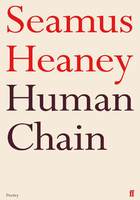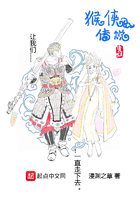A SALTWATER SERENGETI
An ocean without its unnamed monsters
is like a completely dreamless sleep.
—JOHN STEINBECK
Julie Stewart cradled her research subject in her arms. Her ponytail dripped salt water. The back straps of her luminescent yellow waterproof Grundens were twisted tightly to better fit the slight frame of her 5′3″ body. She was covered in squid ink. The sun had long since set. It was mid-November, 2009, about a month away from the Winter Solstice. The sea was a bit rough. The air, a bit chilly.
Julie was kneeling on the dive platform of an unnamed government research boat on Monterey Bay. She was outside the safety of the deck rails. Above her were all the stars in the universe. Two miles below her was the bed of one of the world's most sublime kingdoms, the Monterey Submarine Canyon.
Julie Stewart with a Humboldt on the dive platform
You could have said she was ethereally poised between heaven and earth, but you'd have been taken down a notch if you'd looked around at water level: Monterey Bay is rimmed by all the inglorious mundanity of twenty-first-century human existence. Nearby were the mansion lights of Pebble Beach, the golfers' Mecca. A corporate jet flew overhead preparing to land at the local airport. Off in the distance the towering stack lights of the region's hulking electric plant glistened and beckoned nearly as powerfully as the stars overhead.
Nevertheless, Monterey Bay is a wild place, filled with whales and sharks and shoals of fish and forests of kelp and 20-pound sea slugs and 50-pound Humboldt squid and diaphanous 100-foot-long siphonophores, jellyfish-like creatures that form nets with their poisonous tentacles and wait for prey to come their way. This cold, deep world throbs with energy. It's a saltwater Serengeti.
Rocked by three- and four-foot waves, Julie held her animal close to her chest. At twenty-eight, she was chief scientist of this evening-long research cruise and was part of an informal international team of scientists stretched along the west coast of South and North America. They were all focused on learning more about the biology and behavior of the suddenly prolific Humboldt. The scientists had endless questions. Where had the species come from? Why were these squid here in Monterey in such great numbers? Where were they going? Had something changed in the Pacific that had suddenly opened up a niche that these opportunistic animals were exploiting? Was it because the oceans were warmer? Was it because many of the sea's top predators like whales and sharks had disappeared? Was their explosion in numbers a symptom of some kind of extinction event that affected other kinds of animals but not cephalopods? Or was the species' sudden increase simply one example of the normal long-term ebb and flow of life in the ocean?
On the boat, Julie was at the center of organized chaos and exultant bedlam. Encircling her were five men furiously pulling up five- and six-foot-long squid. Earlier in the season, the team's Humboldt hunts had come up with zilch, but on this particular night the men could hardly keep up with their work.
A huge school of ravenous squid had surfaced just at dusk and were lured to the boat by the large glowing lights on the two-foot-long fishing jigs. In the frothing waters surrounding the boat, squid swirled everywhere. If one squid was hooked on a lure, others saw its vulnerability and attacked.
Scientist John Field pulls in a Humboldt
Cannibalism is common in this species. On another Humboldt fishing trip months earlier, Tom Mattusch, captain of the 53-foot fishing charter Huli Cat, pulled up a Humboldt from about a thousand feet down. When he got the squid above the surface, he saw a lot more than just eight arms and two tentacles. He thought at first he'd somehow caught two animals on one lure, but then he took a second look. Most of the body of the first squid lay in the clutches of the second, which was shredding the first animal and eating it.
On Julie's Humboldt expedition, the men were using stand-up rods, about the size used for bluefin. On the end of their 50- and 60-pound test lines were the specially made heavy jigs that the animals proved unable to resist. As squid after squid was pulled on board, the deck was chaotic.
A few feet away from Julie was her doctoral adviser and laboratory head, neuroscientist-turned-naturalist Bill Gilly of Stanford University and Monterey's Hopkins Marine Station. Over the past several years, Gilly had become somewhat of a television personality, having been featured in numerous documentaries about the "dangerous" Humboldts. Some of these documentaries featured the Humboldt as a "killer," the way wolves were once featured as deadly in children's stories like "Little Red Riding Hood." Gilly and his team sometimes roll their eyes at this kind of dramatization.
Gilly was frustrated at having lost a squid after expending quite a bit of energy hauling it up from a thousand feet down. He chewed pensively on a bit of raw tentacle. The squid had escaped the scientist, but this tiny bit of living flesh had broken off the animal and stayed behind, caught on the strong, sharp spikes of the jig. As Gilly gnawed on the squid's body tissue with its still-flexing suckers, he considered the taste. "Not too bitter," he said.
He also considered the temperament of the Humboldt, which he believed to be much more benign than television shows liked to let on.
Gilly has swum with the animals several times without protective gear, in only snorkel and T-shirt. "One of them just came up right at me, took an arm and touched my hand, and went away. If you're kind to them, they'll be kind to you," he told me later. Maybe so. I could see his point. The animal in Julie's arms didn't look dangerous. On the other hand, I wasn't planning on swimming among them.
Not far from Gilly was Rob Yeomans, bending over the open transom in the stern of the boat, pumping the line of his boat rod. Dressed in a hooded black sweatshirt and orange foul-weather pants, he braced his 5′4″ frame against the roiling sea. He was cackling with excitement. Rob looked like a metronome, moving forward and backward, forward and backward, pulling squid after squid out of the water. There was a great deal of joy on the boat that night.
At thirty-seven, Rob is a fervent and irrepressible high school marine biology teacher from Newburyport, Massachusetts. By heritage and by emotional makeup, he is a commercial fisherman, but because of overfishing in the North Atlantic, he was forced to change jobs. I had first met Rob a half-year earlier when I'd attended a Humboldt squid dissection in his high school classroom. The frozen carcass had been shipped from Gilly's West Coast lab across the continent, then thawed on Rob's worktable. Rob had wanted to meet Gilly in person, visit his lab, and go out with him to catch some squid. I decided to travel along, to see what all the hoopla was about.
The Monterey region was once sparsely populated with bandits' cabins and shoreline squatters' shacks where Chinese fishermen dried squid for export to distant cities. But the peninsula was "upgraded" by the Pacific Improvement Company at the end of the nineteenth century, when the railroad and improved highways created the new industry of tourism. The real estate developers turned the place into a posh resort with firstclass accommodations that included a huge hotel with acres of gardens called the Del Monte, Pebble Beach's golf course, and a clubby lifestyle. All kinds of celebrities showed up, from the Surrealist Salvador Dalí to the Hollywood personality Bob Hope. Teddy Roosevelt galloped his horse along the bay's dramatic shoreline, and President William McKinley visited only months before his 1901 assassination.
Despite the upgrades, Monterey's waterfront continued to smell of rotting fish. The town government established an official "permanent smelling committee" to fine or arrest people who perpetrated offending aromas, but even that didn't work. "Cannery Row in Monterey in California is a poem, a stink, a grating noise," wrote John Steinbeck in his 1945 novel Cannery Row. "The canneries rumble and rattle and squeak until the last fish is cleaned and cut and cooked and canned…."
But eventually, the canneries closed down because the region was fished out. Today called Ocean View Avenue instead of Cannery Row, the street looks much like the main tourist street in Provincetown on Cape Cod, or like Main Street in Bar Harbor, Maine, or like any other reclaimed "quaint" fishing town. Steinbeck's bums and whores and slightly seedy, rather rowdy intellectuals and street cops who enjoy a good drink now and then are mostly gone, along with the infamous stink.
In 1992, Monterey Bay became a federal marine sanctuary, which is something like a national park, although not as commercially restrictive. This good fortune has greatly benefited the sea life in the bay. The kelp beds are healthier. Sea otters put on a show for anyone who cares to walk by the seashore and peer down into the waves. And if you don't feel like exploring even that much, you can just see them in the aquarium. The key to continuing the improvement is science—which in this case means the methodical discovery of how to fit the puzzle pieces together. This is particularly challenging because no one knows what the final picture—a healthy ocean ecosystem—should look like.
We do know a few interesting things, though. Scientists have recently found, for example, a very cool ecological chain reaction: The kelp beds that cradle sea life depend on the sea otters who wrap themselves in the tops of the kelp fronds when they sleep. The otters eat the sea urchins which in turn eat the kelp. Too few otters means too many sea urchins. Too many urchins means too little kelp. So it turns out that the otters, who might at first glance seem to be somewhat harmful to kelp by wrapping themselves in the fronds, are in fact enabling the kelp to thrive.
Nature is funny that way. Sometimes the truth is counterintuitive. It took us a while to unravel the otter-urchin-kelp jigsaw puzzle, and when we did, we felt pretty smart. But when we take a step back, we see that the puzzles we are able to solve in ocean ecosystems are only tiny achievements, like puzzles for toddlers with only three or four pieces. "They're not even two-dimensional jigsaw puzzles we have to solve," Gilly said. "They're three-dimensional. We need some kind of systems approach, but we don't even know what that would begin to look like." The ocean, after all, is not about stability but about flux. Change is normal. Everything is changing. All the time. It will be decades and decades before we can understand the sea in any kind of meaningful way.
Among the current, pressing puzzles in Monterey Bay is the sudden proliferation of Humboldt squid. This is not the first time that Humboldt squid have shown up in the bay and elsewhere on the West Coast, but their numbers this time may be greater than in the past. "We don't know whether they're going to stay long this time, either," Julie told me. "But we're trying to at least understand why they're here whenever they are here." It's a tough task.
The fact that Humboldts have suddenly become common during the summer and fall is not necessarily a bad thing. Charter fishing boat captains like these very large squid because they're not as challenging as game fish to catch, and on the best nights, they're more than plentiful, so most clients come away happy. In the summer of 2009 so many Humboldts swam near the wealthy town of La Jolla that several mass strandings occurred, littering the popular swimming beaches with rotting squid carcasses.
A Humboldt stranding on a California beach
In earlier eras, the public might have been displeased to have their beaches defiled by writhing squid tentacles and slowly rotting squid flesh, but times have changed. Gilly lab doctoral candidate Danna Staaf was in La Jolla when the stranding happened. She went over to the beach to take a look and decided to do some cheap research. It costs money to take a boat out to catch squid, but if the squid come to you, the price is just the cost of a few freezer storage bags.
Strandings of sea life are fairly common. On Cape Cod, sea turtles commonly strand after fall storms. Whales often stranded on the Cape during the Pilgrim era. Even jellyfish strand in huge numbers, making beaches treacherously gelatinous until predators, like gulls, carry the carcasses away. Sometimes animals strand because they're ill, or because they've been trapped in currents, but most of the time, scientists have no idea why marine life washes up on beaches in great numbers.
Standing on the La Jolla beach during the summer of 2009 and looking at the putrefying squid bodies, Danna wondered if the Humboldts had stranded because they suffered from domoic acid poisoning. Domoic acid is a toxin produced by a small subset of algae. Fish and some mollusks are immune to the toxin. When they eat the algae, they accumulate large amounts of the toxin but are not affected.
Higher up in the food chain the situation changes. The birds, mammals, and humans that eat the toxic fish and shellfish suffer greatly. The toxin affects their nerves. In humans, in large enough amounts domoic acid causes sometimes permanent short-term memory loss. In 1987 domoic acid that had accumulated in Prince Edward Island mussels killed three people. More than a hundred others became seriously ill. This also happens on the West Coast. In 1961, hundreds of birds, shearwaters and gulls, began behaving erratically and dropping inexplicably out of the sky in Capitola, California, seemingly attacking the town. People were terrified. Alfred Hitchcock, at work on his film The Birds, took note.
In recent years, domoic acid poisonings on the West Coast appear to have become more frequent. To see if the Humboldt strandings might be another example of this trend, Danna took out her knife and began carving out the stomachs of the dead squid. She put each in a separate plastic bag in order to send them to a lab for analysis. Perhaps the stomach contents would provide a clue as to why the animals had died. She was soon surrounded by curious adults and kids.
Staaf explained that the basic body plan of squid and octopuses is quite different from our own. Our own legs and arms evolved from the fins of fish, our distant vertebrate cousins. But the Humboldt squid have very different fins, which have no bones but which are able to propel the animal through the water at top speed.
Curious people, adults as well as kids, peppered her with questions. She ended up giving out sucker rings "like candy" to those who wanted them, which was, surprisingly, almost everyone. She gave one kid the squid's beak, but he returned later with a glum expression. It turned out that his mother had decreed that this prize of war had no place in the family automobile.
Then she showed some children some packets of sperm, called spermatophores.
"See how they pop open in my hand? Isn't that cool?" she said.
"What's sperm?" asked one kid.
Maybe that's not the best direction to have gone in, she thought to herself. But she decided that the question required an answer.
"Well, it's what mixes with eggs to make baby squid," she said. It sounded kind of like a recipe for baking a cake, but it did the trick.
A few days after sending her frozen squid stomachs to the lab for analysis, Danna heard the results: no domoic acid. She wasn't disappointed because she felt like she was part of an international team of scientists gathering as much basic data on the Humboldt as possible. Her negative result had had a positive effect by providing one more small piece of information that would help scientists understand the whole picture.
Humboldt squid stayed in the headlines for much of 2009. Even PETA—People for the Ethical Treatment of Animals—got into the act. The organization took advantage of the press attention by posting a banner on one beach that said: "Warning: Predator in the Water! You! Go Vegetarian!" PETA's plea didn't work: Humboldt squid sandwiches are now available at many seaside restaurants.















